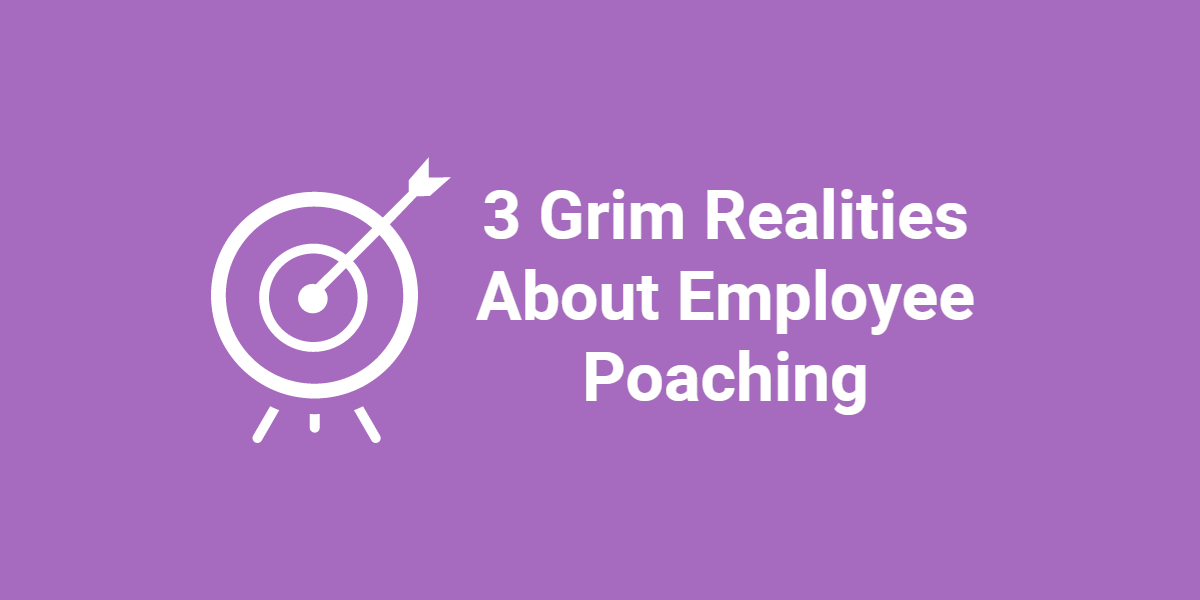According to a report from the Bureau of Labor Statistics, the U.S.’s unemployment rate for April 2017 was 4.4 percent. While that’s great news for the country as a whole, it does make talent acquisition more difficult. With fewer people actively looking for jobs, companies need to focus their recruiting efforts on passive candidates.
And depending on how large your industry is, that could mean participating in employee poaching.
Of course, we’ve all been there before. You meet someone who’s clearly fantastic at their job at an industry event, and you know they would be a great addition to your team. The question arises, how aggressive do you get about recruiting them?
If you are thinking about employee poaching, here are three things to consider first to ensure the talent is actually worth the risk:
Legal issues
“Business competition is not limited to battles over customers,” said Abtin Mehdizadegan, management-side labor and employment defense attorney for Cross, Gunter, Witherspoon & Galchus, P.C.
 “As the modern workplace becomes more mobile and fluid, companies are finding themselves in talent acquisition wars to recruit, employ, and retain the most productive and talented workforce.”
“As the modern workplace becomes more mobile and fluid, companies are finding themselves in talent acquisition wars to recruit, employ, and retain the most productive and talented workforce.”
As a result, when a smart company finds a great employee, they often take legal precautions to ensure that they won’t lose the high performer. They have new hires sign non-compete or non-solicitation contracts. As an employer, if you want to try to convince talent to break these deals, you need to understand all the ramifications.
“Employers should conduct their own cost-benefit-risk analyses in consultation with an experienced labor counsel to determine whether the acquisition of an employee from a direct competitor is advisable,” said Mehdizadegan.
“To support the efficacy of this process, employers should encourage their newly-acquired employees to be honest about the existence of a restrictive covenants agreement before hiring them.”
Higher recruiting costs
 The best talent knows their worth, so convincing them to leave their company won’t be cheap. You’ll need to be able to be competitive against their current salary and benefits package to win them over.
The best talent knows their worth, so convincing them to leave their company won’t be cheap. You’ll need to be able to be competitive against their current salary and benefits package to win them over.
And even if you can do that, it might not be enough.
“These employees can easily just use your offer (and the cost of recruiting them) to get a counter offer,” said Ben Brooks, Founder & CEO of PILOT. This means you waste time and money on employee poaching that never works out.
Increase the odds that you’ll land the best employees by having further evidence about why your organization is fantastic.
After you approach a potential employee, chances are they’ll begin to research your company. If you’ve already built up a healthy online presence through your website and social media, the candidate will see that you also have a great culture and work environment to offer them.
The grass is greener syndrome
Sometimes, even the best employees are simply unhappy with their current job. Maybe they feel underappreciated or unchallenged. Whatever the reason, they’ll jump at the first offer that comes along because it gives them an out.
“You want to make sure an employee is coming to you not just because you are an ‘anywhere but here’ option for them,” said Brooks. If that’s the only reason someone wants to join your organization, they most likely won’t be happy working for you in the long run.
Avoid this by taking your time when assessing these candidates.
Don’t skip steps of the hiring process just because you’ve made assumptions about the individual’s skills. Put them through a one-way video interview screening so you can get an idea about their true interest in your organization.
This will ensure that you hire an employee who values your company as much as it values them.
Employee poaching can help you find great talent when there doesn’t seem to be many other options. But you do need to be careful. If you remember these tips and tricks, however, you’ll be able to get the employees you need.
What more tips about talent acquisition? Download our video recruiting guide!











